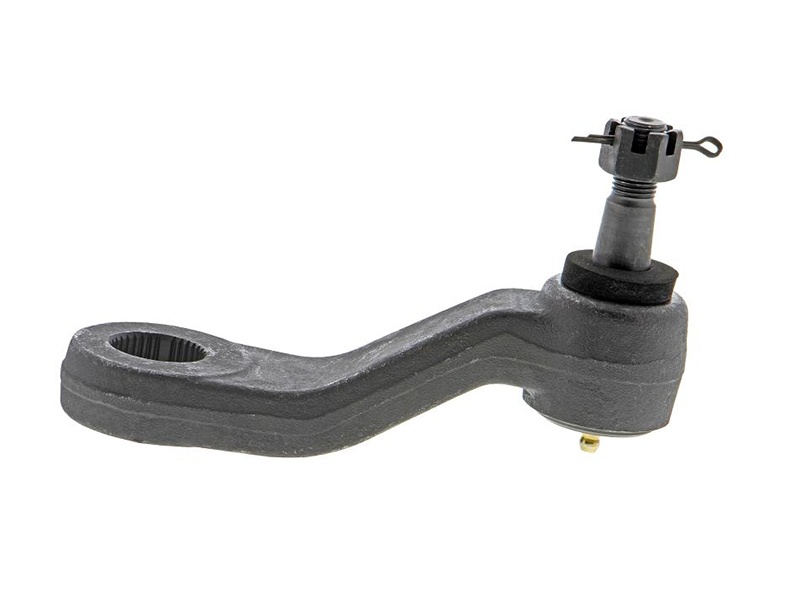How to Replace a Pitman Arm in Your Vehicle
When it comes to vehicle maintenance many drivers overlook a critical component the Pitman arm. This unassuming piece plays a vital role in your steering system, connecting the steering gear to the rest of your vehicle’s steering mechanism. If you’ve noticed any signs that this part may be wearing out or failing, it’s time to take action. Replacing a Pitman arm might sound daunting, but with the right tools and guidance, you can tackle this task yourself and save on costly repairs.
In this guide, we’ll walk you through everything from identifying issues with your Pitman arm to successfully replacing it. Whether you’re an experienced DIYer or just starting out on your automotive journey, you’ll find valuable information here. So roll up those sleeves—let’s get started!
What is a Pitman Arm and its Function in a Vehicle?
The Pitman arm is a crucial component of your vehicle’s steering system. This forged metal lever connects the steering gear to the rest of the linkage, enabling you to steer effectively.
When you turn the steering wheel, the motion travels through the column and into the Pitman arm. It then translates that movement to other parts of your steering assembly, such as tie rods and idler arms.
By converting rotational motion into linear movement, it allows for precise control over your vehicle’s direction. A well-functioning Pitman arm ensures smooth handling and stability on the road.
If this part starts to wear out or fail, it can lead to poor alignment and erratic steering behavior. Understanding its role helps in recognizing when something might be amiss with your vehicle’s performance.
Signs of a Faulty Pitman Arm
A faulty Pitman arm can lead to serious steering issues. One of the first signs is a loose or unresponsive steering wheel. If it feels like you’re turning the wheel but nothing happens, it’s time to investigate.
Another indicator is unusual noise during turns. Listen for clunking or grinding sounds that weren’t there before; they may signal a problem with your vehicle’s steering components.
Excessive play in the steering system is also a red flag. You might notice increased effort needed to steer, especially at lower speeds.
Uneven tire wear can point to alignment problems caused by a failing Pitman arm. Keep an eye on your tires and monitor their condition regularly—this could save you from bigger repairs down the line.
Tools Needed for Replacing a Pitman Arm
Replacing a Pitman arm requires the right tools to ensure the job is done efficiently and safely. Start with basic hand tools like wrenches and sockets, typically in metric or standard sizes depending on your vehicle’s make.
You’ll also need a pitman arm puller. This specialized tool helps detach the Pitman arm from the steering gearbox without damaging other components. Many auto parts stores rent these out if you don’t want to invest in one.
A torque wrench is essential for reattaching bolts securely, ensuring they are tightened to manufacturer specifications. Don’t forget safety gear—gloves and goggles can protect against sharp edges or debris during the process.
Having some penetrating oil on hand can help loosen rusted bolts that may be stubborn. With these tools ready, you’ll set yourself up for a smoother replacement experience.
Step-by-Step Guide: How to Replace a Pitman Arm
Start by safely lifting your vehicle with a jack and securing it on jack stands. This ensures you have enough clearance to work comfortably.
Next, locate the Pitman arm on the steering gear. It’s the arm that connects to the steering linkage, usually found near the firewall.
Remove any bolts or nuts securing the Pitman arm using a socket wrench. Keep these parts organized for easy reassembly later.
Use a pitman arm puller if necessary to detach it from the sector shaft. A gentle tap may help loosen stubborn connections.
Once removed, compare your new Pitman arm with the old one to ensure they match in size and shape.
Position the new Pitman arm onto its respective shaft and secure it tightly with bolts or nuts you’ve previously set aside. Don’t forget to torque them according to manufacturer specifications for safety!
Tips for a Successful Replacement
When replacing a Pitman arm, preparation is key. Start by ensuring you have all the necessary tools and parts at hand. This will save time and frustration during the process.
Make sure to work in a well-lit area. Proper visibility makes it easier to identify any issues or details that may need your attention.
Using quality replacement parts can make a significant difference in performance and longevity. Avoid cheap alternatives; invest in reliable components for peace of mind.
Be patient during disassembly. Take photos as you go along, so you have visual references when reassembling everything.
Always double-check your work before hitting the road. Ensure everything is tightened correctly and aligned properly — safety should be your top priority!
Common Mistakes to Avoid
When replacing a Pitman arm, one of the most common mistakes is neglecting to properly align it. Misalignment can lead to steering issues and premature wear on other components.
Another error is failing to check surrounding parts for damage. The Pitman arm connects with several crucial elements in your vehicle’s steering system. Overlooking damaged tie rods or idler arms could result in further complications down the line.
It’s also vital not to skip torque specifications when fastening bolts. Incorrect torque can compromise safety and performance, leading to potential failure during use.
Many forget about cleaning surfaces before installation. Dirt or debris can interfere with proper fitment and function, creating long-term issues you want to avoid. Taking these precautions ensures a smoother replacement process.
Conclusion
Replacing a Pitman arm is an essential maintenance task that can significantly improve your vehicle’s steering performance. By understanding its function and recognizing the signs of wear, you empower yourself to take action before things escalate.
Equipped with the right tools and following our step-by-step guide, you’ll find that replacing this component isn’t just manageable but also rewarding. Remember to keep in mind some helpful tips for a successful replacement, as well as avoiding common pitfalls along the way.
Taking care of your vehicle not only ensures safety but also enhances its longevity. When you notice any irregularities in steering or feel uncertain about your Pitman arm’s condition, don’t hesitate to act. Embrace this DIY journey with confidence!





